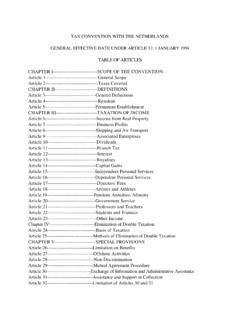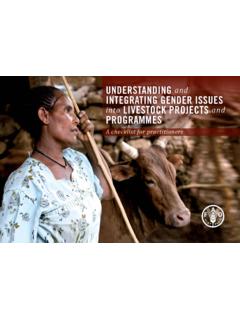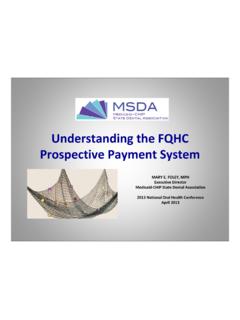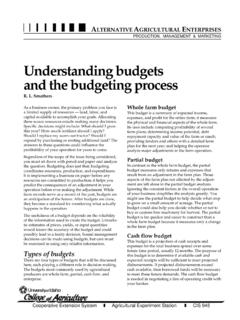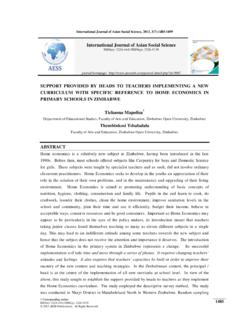Transcription of UNDERSTANDING THE DIGITAL DIVIDE - OECD.org
1 UNDERSTANDING THE DIGITAL DIVIDE OECD 2001 Applications for permission to reproduce or translate all or part of this work should be made to:OECD Publications, 2 rue Andr Pascal, 75775 Paris Cedex 16, FOR ECONOMIC CO-OPERATION AND DEVELOPMENTUNDERSTANDING THE DIGITAL DIVIDEUNDERSTANDING THE DIGITAL TO ICTs AND THE INTERNET ..7 Telecommunication access paths are the basic symptom of the DIGITAL DIVIDE ..7 The DIGITAL DIVIDE is even more marked for Internet access ..8 Competition is the road to PRICE OF ACCESS.
2 10 With liberalisation, access prices are dropping ..10 Liberalisation is also leading to lower bandwidth the same time, Internet access prices are of Internet hosts are rising rapidly among OECD countries remain THE INTERNET ..15 Secure servers are essential for e-commerce and trust ..15 Countries with unlimited Internet access stay on line countries differ markedly in access by individuals and is an important determinant of PC penetration and Internet attainment helps to explain differences in access to ICTs.
3 19 Family structure makes a difference as and gender play their role ..21An ethnic DIVIDE is also is the main language of the Internet ..23 Urban homes are more connected than rural ones ..24 Firm size is important for Internet and industry sectors differ in their use of the regions have better access than rural INTERNET ACCESS ..28 Cable and satellite access may increase demand for the Internet ..28 DIGITAL TV may be a means of diminishing the DIGITAL DIVIDE ..29 Mobile telephony offers another potential route for access.
4 30 POLICIES TO REDUCE THE DIGITAL governments are implementing policy measures to improve ICT access and use ..31 FURTHER READING ..32 TABLE OF CONTENTS3 Visions of a global knowledge-based economy anduniversal electronic commerce, characterised by the death of distance must be tempered by the realitythat half the world s population has never made atelephone call, much less accessed the Internet. OECD (1999), The Economic and Social Impact ofElectronic Commerce: Preliminary Findings andResearch is the DIGITAL DIVIDE ?
5 As used here, the term DIGITAL DIVIDE refers to the gap between individuals, households, businessesand geographic areas at different socio-economic levels with regard both to their opportunities toaccess information and communication technologies (ICTs) and to their use of the Internet for awide variety of activities. The DIGITAL DIVIDE reflects various differences among and within ability of individuals and businesses to take advantage of the Internet varies significantly acrossthe OECD area as well as between OECD and non-member countries.
6 Access to basictelecommunications infrastructures is fundamental to any consideration of the issue, as it precedesand is more widely available than access to and use of the so-called DIGITAL DIVIDE raises a number of questions. Where does it occur and why? What areits causes? How is it to be measured? What are the relevant parameters? What is its extent, that is,how wide is the DIGITAL DIVIDE ? Where is it most critical? What are its effects likely to be in the shortterm? In the longer term? What needs to be done to alleviate it?
7 These questions have only recentlybeen raised, and it is not possible, as yet, to answer all of them with any certainty. Measuring the DIGITAL divideBecause of the current interest in these issues, both among governments and the public, the OECDhas begun efforts to measure the DIGITAL DIVIDE . In addition to communications infrastructures,important indicators appear to be computer availability and potentially the availability ofalternative access through TVs or mobile phones and Internet access (these are readiness indicators).
8 The DIGITAL DIVIDE among households appears to depend primarily on two variables, income andeducation. Other variables, such as household size and type, age, gender, racial and linguisticbackgrounds and location also play an important role. The differences in PC and Internet access byhousehold income are very large and increasing, but access in lower income groups is rising. Largelythrough its effects on income, the higher the level of education, the more likely individuals are tohave access to ICTs.
9 Other important indicators concern differences in the profiles of countries, individuals andbusinesses that use, and make the most use of, the possibilities offered by the new informationtechnologies and the Internet. As with all efforts to measure new phenomena, much of theinformation included here represents a first effort to obtain data on the dimensions of the digitaldivide. Because harmonised cross-country data collection does not exist for measuring some of therelevant phenomena, the figures are often not comparable in terms of time and , because access to and development of information, communication and e-commerceresources are increasingly viewed as crucial for economic and social development (for reasons ofefficiency and because of network effects)
10 , OECD countries have begun to examine how best toensure access for citizens, businesses and regions to these technologies and services. To do soefficiently and effectively, it is important that governments have information on the nature andextent of the DIGITAL DIVIDE and on the kinds of measures that can help to overcome THE DIGITAL DIVIDE5 UNDERSTANDING THE DIGITAL DIVIDEO vercoming the DIGITAL divideThe importance of policy and regulatory reform needs to be underlined.











